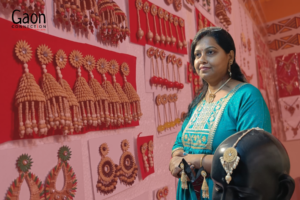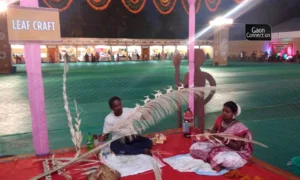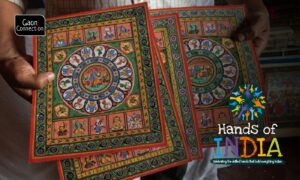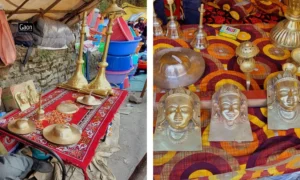The kites are raring to fly. Bright-coloured with long tails, they hang outside shops in Handipura, the 150-year-old kite market of Jaipur. The lucky ones are picked up by the customers who will send these bright ‘birds’ up in the sky on Sankranti festival (also known as Sakrant or Makar Sankranti), which is set to be celebrated on January 15.
That day, from morning till evening, the azure sky of the Pink City will be dotted with multi-colour kites gliding and dancing, much to the joy of Rajasthan’s capital city’s inhabitants who celebrate Sakrant with pomp and show. And flying kites is an integral part of the celebrations.
Kites are usually prepared from August to December and sold from January to March when different festivals are celebrated across India. Not only from across the state, but kite sellers from Bareilly in Uttar Pradesh, about 460 kilometres away from Jaipur, arrive every year to sell their kites, which are in great demand.
According to the shopkeepers, kites from Bareilly have better quality than those produced in Jaipur. Hafiz Khaleel, a 38-year-old kite seller at Handipura showed both the types of kites to Gaon Connection and explained that the bamboo used in Jaipur kites is not as smooth as the Bareilly kites.
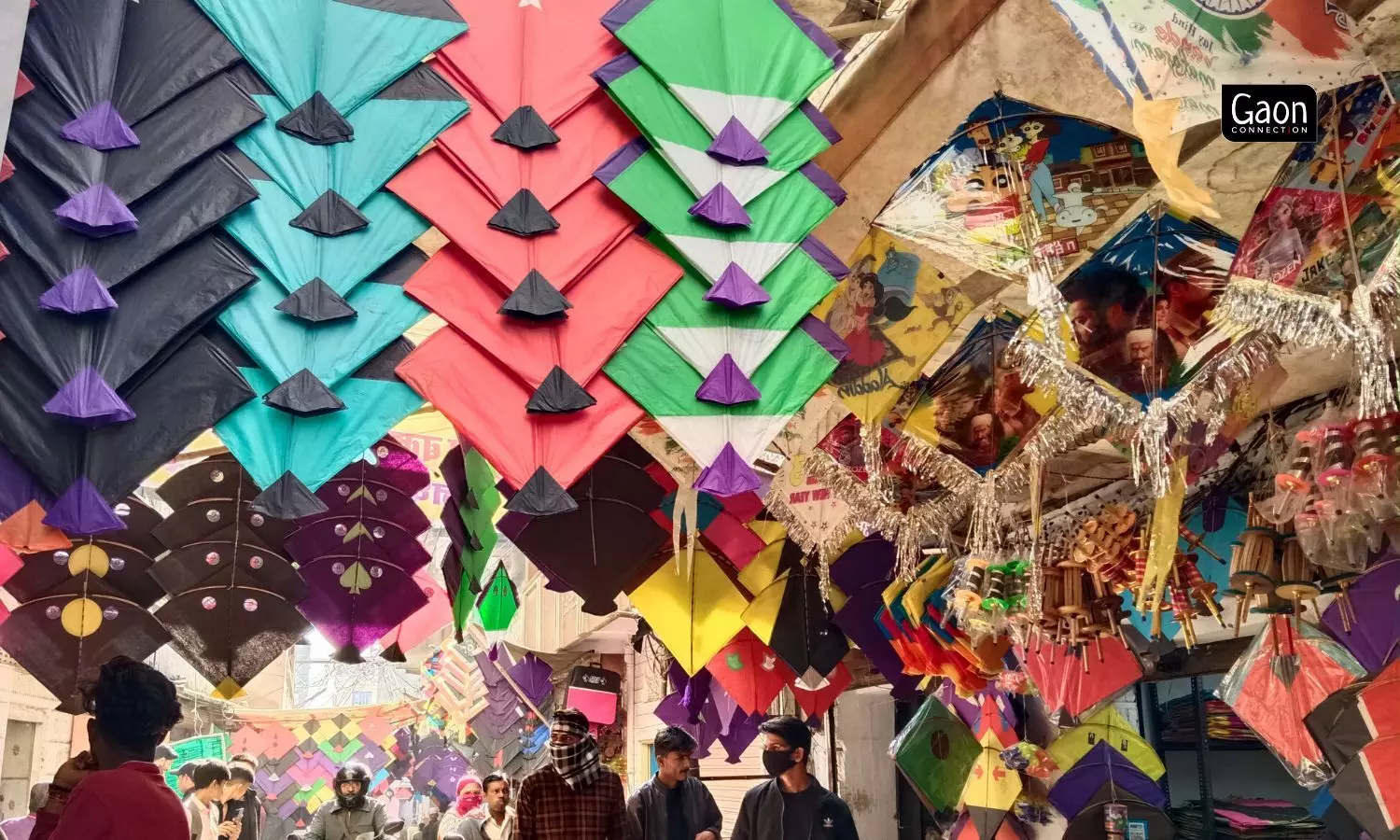
Kites are usually prepared from August to December and sold from January to March when different festivals are celebrated across India.
“Jaipur kites do not have the tape on the side that gives better grip to the kites. Bareilly kites are usually simple in colours while the Jaipur kites have vibrant colours and frills. But Bareilly kites are expected to last longer,” said Khaleel.
Also Read: It’s time we bid adieu to the frost and the chill and salute the Sun
Kites are usually prepared from August to December and sold from January to March when different festivals are celebrated across India. Jaipur and Ahmedabad (Gujarat) have the biggest market of kites during Sakrant.
Makar Sankranti is celebrated across the country and has different names in different states. For instance, in Gujarat it is known as Uttarayan, in Assam people celebrate Bhog Bihu, and in Tamil Nadu it is the festival of Pongal. Sankranti is a harvest festival and is dedicated to the Sun god. It marks the first day of the sun’s transit into the Makara (Capricorn).
The history of kite-makers of Jaipur
Jaipur has 150-year-old kite history. According to Vinod Joshi, director of Jajam Foundation and a heritage researcher based in Jaipur, Maharaja Sawai Ram Singh, who ruled between 1835-80, brought the tradition of kite flying from Awadh region.
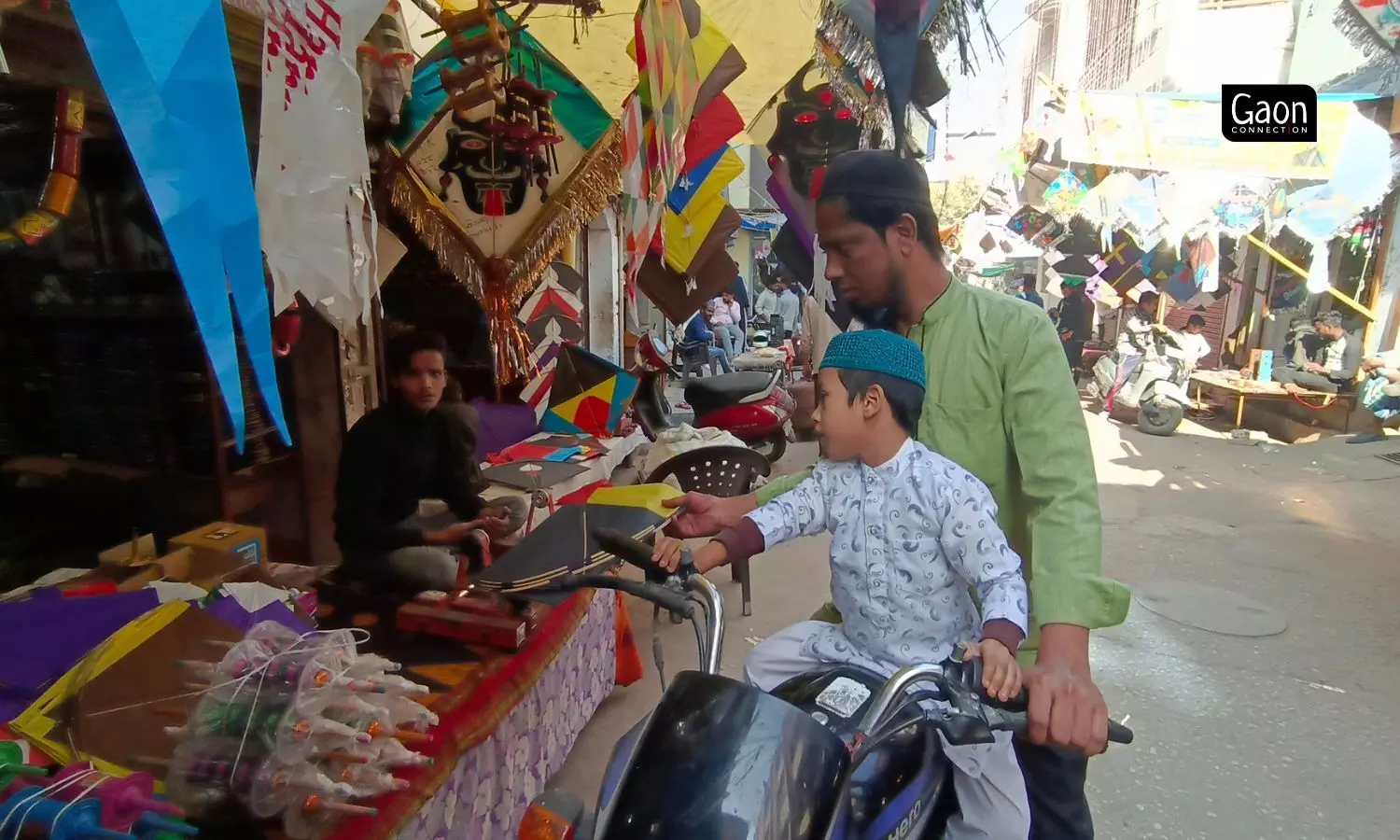
As the royal started promoting kite flying in the city, this news spread everywhere and a large number of kite makers settled in Jaipur and some residents of the city as well took up this art form.
“It is said that Sawai Ram Singh loved the tradition of kite flying and brought it to Jaipur. Special kites made of cloth that were called ‘Tukkal’ were made for the royals. Royals used to fly it on the palace terrace that influenced the general public. It later became a community event on Sakrant,” Joshi told Gaon Connection.
Jaipur royals had 36 ‘karkhanas’ (officials department) dedicated to different work. One of them was dedicated to creative work under which kites were also a part. Kite flying competitions used to be organised and people were awarded by the royal families.
As the royal started promoting kite flying in the city, this news spread everywhere and a large number of kite makers settled in Jaipur and some residents of the city as well took up this art form. Majority of kite artists in the Pink City are from Muslim community.
Also Read: Gud Tidings: Migrant families from Bihar add the sweetness of jaggery to Bhogali Bihu in Assam
Seventy-five-year-old Abdul Mugni, a kite seller in Handipura, proudly discussed his family heritage. He is the third generation in his family in this profession. “Kite made by my great-grandfather is showcased in Jaigarh palace. My grandfather was also awarded by the royal family for his art. Earlier we used to make kites only during the festivals but now we make kites every month and sell them to wholesalers in the market,” Mugni told Gaon Connection.

Kite making, say the craftsmen, is a difficult art that requires two days and four people to work together to complete a big kite.
The 75-year-old kite maker explained that in the off season, men do other work and women make kites at home. In the off season, most of the shops in Handipura start selling other products as well. Although some big businessmen have started doing online business.
The art of kite-making
Kite making, say the craftsmen, is a difficult art that requires two days and four people to work together to complete a big kite. Niyaz Ahamad, a 50-year-old kite seller from Bareilly, who has come down to Jaipur to sell his kites, explained that every part of the kite is made by a different person.
“The bamboos are smoothened and installed on paper by men and then the kites are taped by women while giving them necessary finishing. The rate of men working on bamboo is Rs 100 for 100 kites while women get Rs 70 for 100 kites,” Ahamad told Gaon Connection.
Although most shopkeepers sell normal kites, there are some who make unique kites with celebrity faces. Abdul Gafoor Ansari, a 73-year-old retired government employee, has earned a name for making kites with celebrity faces on it.
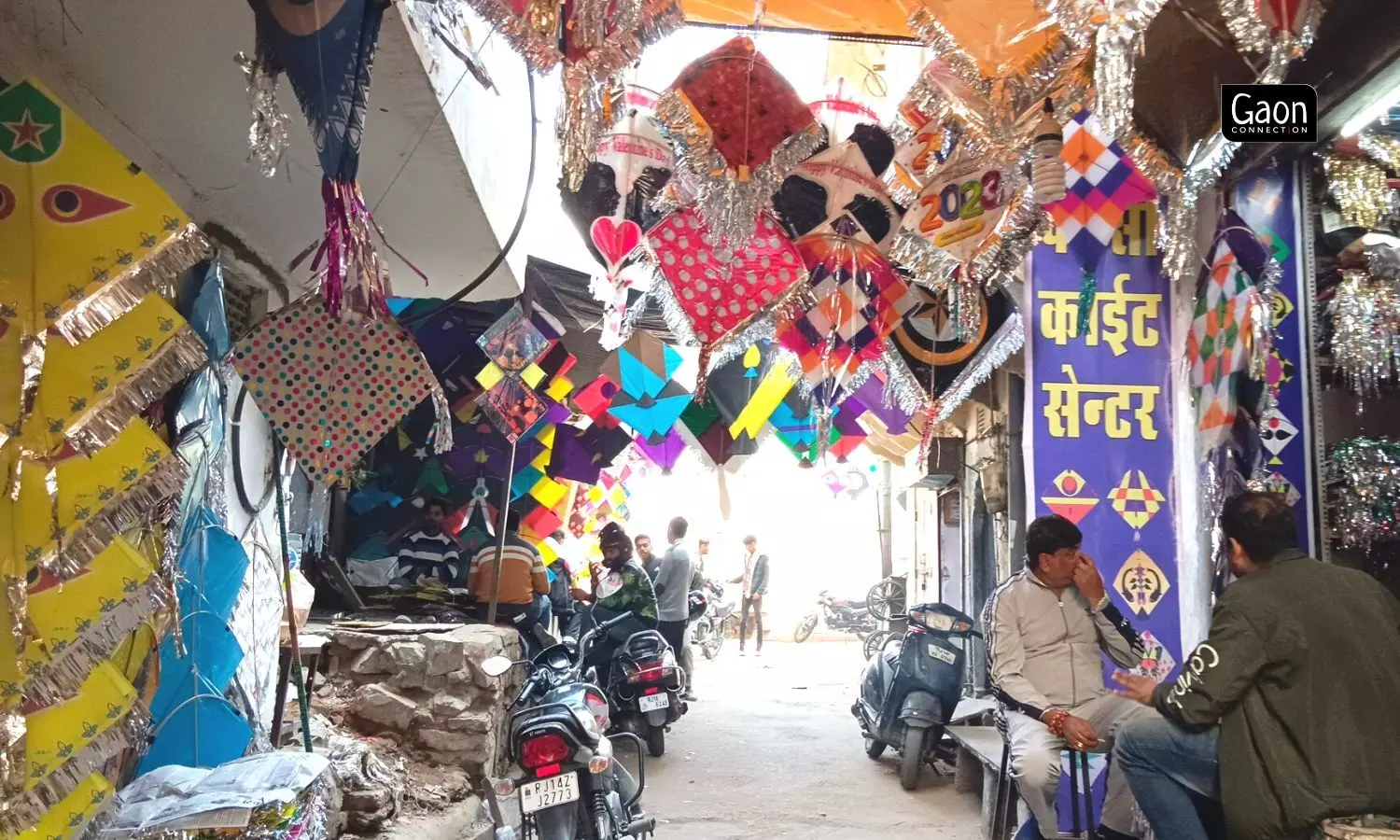
According to shopkeepers in Handipura, this year the sale of kites is low due to the extreme cold wave that has gripped north India.
“My father was not a kite maker but I was always inclined towards this work. First time I made a kite with Subhash Chandra Bose face and green uniform. It has been four decades in this work and I have made kites of freedom fighters, politicians, and international celebrities,” Ansari told Gaon Connection.
“It takes around three days and Rs 500 to make one kite,” said Ansari. Along with bamboo sticks, paper and a picture printed out from the internet, he has made many kites that have become his identity.
This year, along with other celebrities, kites of Russian president Vladimir Putin and Ukrainian president Volodymyr Zelenskyy is a new addition. Ansari said that he makes these kites as a hobby not a business and expects to continue it till the end of his life. He also clarified that he was not associated with any political parties in Rajasthan and just made these kites as a hobby.
Also Read: Pongal O Pongal: Add sweetness to your day with this traditional Pongal speciality
Cold wave hits kite business
According to shopkeepers in Handipura, this year the sale of kites is low due to the extreme cold wave that has gripped north India. Due to the cold wave and heavy fog in Bareilly, labourers could not work and kites in required quantity were not prepared. This has led to the hike in the kite prices in the Jaipur market.
Talib Ansari, a 25-year-old shopkeeper in Handipura explained that Sakrant is an important festival of the year but customers are not purchasing kites as per expectations. “The raw material was not prepared on time due to difficult weather in Bareilly. The price of 30 kites is Rs 300 which were sold for Rs 150 last year.”
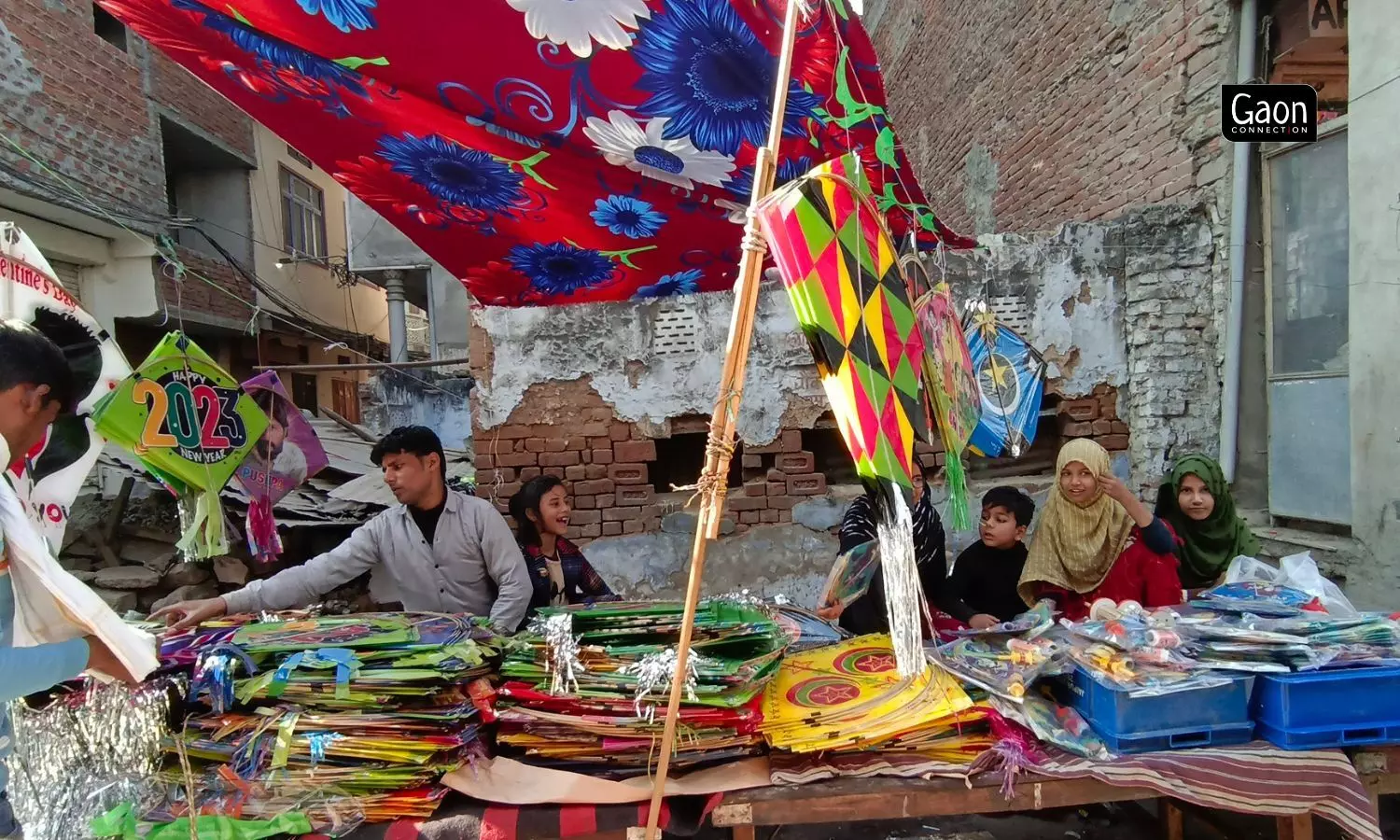
Although the art of kite making has been followed by people for generations, many shopkeepers are apprehensive in letting their children take this up.
Mohammad Kazim, another shop owner, said that his online business was more profitable. As the kites are flown on different occasions in every corner of the country and world, businessmen have started supplying them through online portals, he said.
Also Read: Did you know that cinnamon is added to the powdered glass while making the kite thread?
Foreign kites imported from Thailand and China are also an attraction for people of Jaipur. In Handipura, very few shop-owners sell these kites. One such shop is of 55-year-old Abdul Hameed whose foreign kites made of plastic are always in demand.
“I have kites of every shape and size. Dragon kites, fairy kites and cartoon characters’ kites are in demand. My stock of 5,000 kites is almost sold. I have kites from two-feet to 20-feet which are sold from Rs 200 to Rs 5,000. Shopkeepers who purchase from me in wholesale, sell these products at higher rates in the market,” Hameed told Gaon Connection.
The kitemaker said that he participates in many kite festivals in Raipur (Chhattisgarh) and Ahmedabad. The only wish Hameed said he has is that the Rajasthan government should also organise big kite festivals in the state that will help the kite sellers earn a decent living.
There is an event organised every year by the Rajasthan Tourism at the lake side of Jal Mahal Palace in Jaipur in which the entire city participates in kite flying.
Also Read: Dots and Dashes: Pongal and the fine art of community kolams in Tamil Nadu
Kite-making a dying profession?
Although the art of kite making has been followed by people for generations, many shopkeepers are apprehensive in letting their children take this up.
Abdul Hameed’s sons are both graduates in corporate jobs. “I have no intention in letting them take up this shop. Earlier, people used to start flying kites from January 1 to 14 but now the market sale picks up from January 10 because people are busy with mobile phones and gadgets. With the rising prices and decreasing craze in youth, it is better for my children to take a stable job,” said Hameed.
Some shopkeepers still believe that this profession will continue. Niyaz Ahamad from Bareilly said that people are moving towards other professions but this is a generational work and there will always be someone in the family to continue with this heritage.







